Pluto | 29 | She/They my artwork I'm new here (i don't know what i'm doing)
Last active 60 minutes ago
Don't wanna be here? Send us removal request.
Text
isn't it crazy that a woman being gender nonconforming literally just requires her to exist in her own body without making any changes whatsoever. why does the fact that i don't wear makeup and i don't shave and i don't wear a bra have to be some political act. why can't i just fucking exist
58K notes
·
View notes
Text
“I want you to do this with me for one month. One month. Write 10 observations a week and by the end of four weeks, you will have an answer. Because when someone writes about the rustic gutter and the water pouring through it onto the muddy grass, the real pours into the room. And it’s thrilling. We’re all enlivened by it. We don’t have to find more than the rustic gutter and the muddy grass and the pouring cold water.”
— Marie Howe, Boston University’s 2016 Theopoetics Conference (via mothersofmyheart)
13K notes
·
View notes
Note
do you have any links to people who explain what "bulking" is? you said it's a common technique but none of my classes have ever mentioned it and I'm not finding any mentions of it online (at least when I search for art techniques/tutorials -- lots of bodybuilding videos, though)
Omigod, sorry for the typo-- it's "block-in".
But here are some links of tutorials I used to follow:
Florent Farges - arts
youtube
Paint Coach
youtube
SIMPLIFY Drawing and Painting
youtube
Then on instagram there is this man: @nic.thurman
Nic is an amazing portrait artist and he explains everything very well !
And sorry again for the confusion !
156 notes
·
View notes
Note
spec. spec. spec youve changed the game. i never realized your pointer finger and your wrist artery are the same. holy shit. im going to draw hands thank you


aasdjsd its not really an artery but its a useful landmark to facilitate the Flow of a pose imo
13K notes
·
View notes
Text
"Punishment works!!!" We're drowning in three to four generations of people so pants-shittingly terrified of ever being wrong that half of everyone has constructed a worldview wherein they never even consider the possibility that they could be wrong and the other half behaves like one wrong move will make anything or anyone explode violently into a million irreperable pieces. I don't think it works guys
57K notes
·
View notes
Note
op made the post unrebloggable, can you repost what you wrote about the christan anti sex work group?
Sure thing! I don't blame them for turning off reblogs. I had to block some antisemitic creep who reblogged it from me with a rant about how actually it was feminism's fault, so clearly it had broken containment into the gross side of tumblr. Here it is with OP's handle and icon removed so they don't have to be connected to it anymore.
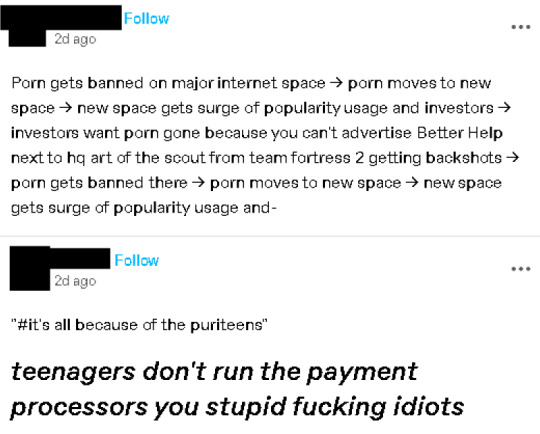
It's not just the advertisers- that's definitely also part of it, but this is also the direct, targeted action of a specific christian fundamentalist group, the "National Center on Sexual Exploitation," previously "Morality in Media" and "Operation Yorkville," a political lobbying organization that campaigns against pornography, who claim "Pornographers are committing the biggest crimes of the century!"

It was*this group specifically* (accompanied by another Christian anti-porn org, Exodus Cry) that put pressure on mastercard and visa to stop facilitating electronic payment for sites that hosted nsfw material. Faced with the risk of losing their ability to process payments, the sites partnered with visa and mastercard had no choice but to agree to porn bans.
They were behind Onlyfans flirting with banning sex workers last year, and they were one of the principle supporters of FOSTA/SESTA. I can not understate just how much influence this one well connected, well funded group has.
From their about page:

NCOSE convinced mastercard and visa to cut ties with porn not for the sake of advertisers, but because they convinced them that they could be potentially liable for facilitating illegal activity- the exchange of CSAM, prostitution and human trafficking- happening on the porn sites they were partnered with, which in NCOSE's opinion is all porn sites, and all porn period, since they believe all porn is human trafficking.
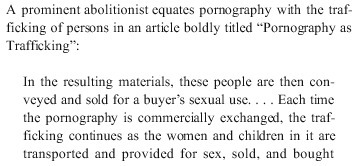
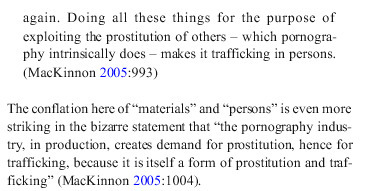
NCOSE has been around since the 60's, but hasn't seen much success until the last decade. Their previous campaigns, focused on pushing for the enforcement of obscenity laws from the 1800's and fabricating blatantly nonfactual research about porn as a mental health crisis, were not as widely received. But they've had much more success since they've started weaponizing concern for victims of abuse and trafficking, appropriating progressive language and trading in on the white moral panic about child sex trafficking that grew directly from the "Stranger Danger" and "Satanic Ritual Abuse" moral panics of the 80's and 90's- both themselves the result of a right wing reactionary movement using concern trolling about the safety of children to rail against drugs, loud music, and tabletop rpgs.
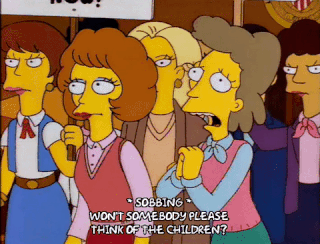
Blaming the sanitization of the internet solely on the vague specter of "advertisers" ignores the real, nameable groups and their extremely straightforward christofacist goals. It promotes apathy, pointing at an ambiguous target that feels as impossible to combat as the machine of capitalism itself. When it's literally just these specific guys, and like two or three similar, equally identifiable organizations!
I'm not saying sites like facebook don't have a vested interest in looking squeaky clean and family friendly, but tumblr, pornhub, onlyfans, patreon and gumroad did not move to ban porn because of advertising. Tumblr has never attracted the kind of advertisers who care, and pornhub, onlyfans, patreon and gumroad don't make the bulk of their money from ads, but from user transactions, which MUST be facilitated by an electronic banking platform in order to be safe and reliable.
Tumblr's porn ban was due to FOSTA/SESTA meaning the could not continue operating unless they either dumped nsfw content or went adults only and implemented costly and draconian age verification protocols that, frankly, no one was going to put up with for a mediocre blogging platform. The others folded under pressure from the electronic banking platforms, which threatened to drop them as partners due to the pressure *they* were under from NCOSE weaponizing public opinion to create a flurry of anger and condemnation towards these companies "facilitating human trafficking."
The enemy is not hiding, we know their names! They come not in the name of capitalism (who merely rides their coattails when convenient) but in the name of puritanical Christian Fascism.
So no, it's not the puriteens. It's their parents and grandparents, on an open crusade to enforce Christian anti-sex beliefs on as much of the world as they can manage.
16K notes
·
View notes
Text
Little friendly reminder for artists to disable their visibility towards third parties in Tumblr as it explicitly states they can use your data to train AI models <3
2K notes
·
View notes
Text
genuinely wild to me when I go to someone's house and we watch TV or listen to music or something and there are ads. I haven't seen an ad in my home since 2005. what do you mean you haven't set up multiple layers of digital infrastructure to banish corporate messaging to oblivion before it manifests? listen, this is important. this is the 21st century version of carving sigils on the wall to deny entry to demons or wearing bells to ward off the Unseelie. come on give me your router admin password and I'll show you how to cast a protective spell of Get Thee Tae Fuck, Capital
67K notes
·
View notes
Text
The Three Paragraphs That Sell Your Book (No Matter How You Publish It)

by Elijah J Mears
It is a truth universally acknowledged that an unpublished writer in possession of a good manuscript would rather peel off their own skin than market that manuscript. But alas, no matter how you plan to publish—whether you’re going for the long slog in the querying trenches or the lonely shout into the void of self-pub—if a book falls in a forest and no one is around to hear it, it does not, in fact, make a sale.
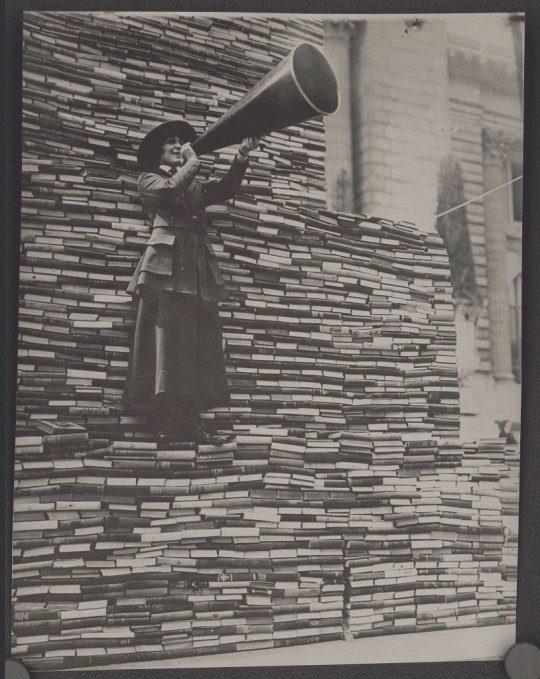
We’ve all been there. I’m there right now. As I wrap up what I hope will be one of the final pre-querying drafts of my own first novel, I’m also staring down the barrel of (gulp) submitting to the mortifying ordeal of being known.
For a long time, I hemmed and hawed over just how I wanted to go. I’ve got a lot of friends in the indie publishing space who’ve tempted my inner perfectionist with the promise of total control and freedom from the whims of agents and publishing houses. On the other hand, even though traditional publishing has changed a lot in the last few decades, it can still be hard to beat having the muscle of a Big Five imprint behind your book, assuming you can get it.
(And I mean, what speculative fiction novelist doesn’t fall asleep at night dreaming of a big fat publishing deal at Tor?)
No matter what path you choose for your novel, your best ally on the path to success is knowledge. But learning things once, frankly, isn’t enough in our industry. Publishing is constantly in flux—what worked well five years ago could be disastrous today. Any wisdom I could give you in this blog post might be dangerously out of date a month from now.
So instead, I want to share some of my teachers with you. These are voices I’ve come to trust during my own writing journey. Even if the specific resources I’m linking to end up going out of date, I know I can count on these fine folks to think fast, adapt, and steer me in the right direction.
These are the people I know you can trust to teach you about the most critical piece of copy you’ll need in your marketing arsenal, no matter which route you take.
That’s right. I’m talking about your book blurb. I mean pitch. Or, uh, your hook. Premise?
Maybe we should start by defining some terms.
Premises, book blurbs, and pitches: oh my!
If you’ve ever looked up how to write a back cover blurb or how to write a query letter, you’ve probably encountered a myriad of terms for what is fundamentally the same concept.
On the indie side of the table, I almost always see these three paragraphs called your “book blurb.” Although occasionally I see the less ceremonious moniker of “back cover copy.” This can still get confusing because traditional publishing often uses the word “blurb” to mean something else entirely. But my friends pretty universally use that word for these three paragraphs. If you self-publish, you’ll use this pitch on your back cover, your sales page on Amazon or Kobo or Itch or wherever else you sell, and basically anywhere you’re trying to convince someone to exchange money for a copy of your book.
For traditional publishing, we get a little messier. I like the word “pitch” for this piece of copy, mostly because it’s the word I first saw someone else use for it, and I’m sentimental like that. Nostalgia aside, there’s really no standard here—I’ve seen it called a hook, a story premise, a book description, and probably a few other things. But all these words mean the same thing: the three-ish paragraphs of your query letter where you try to get an agent to jump up and shout, “That sounds amazing! I simply must read it and sell it to a publishing house for a bajillion dollars.”
And while back cover blurbs and query pitches might appear in slightly different places, what I’ve come to realize as I’ve researched how to write them is… they’re basically the same thing.

What all these terms boil down to is this: if you’re going to get someone sufficiently invested in your book to either buy a copy or offer you representation, publishing as an industry has decided that the best way to do this is to condense your story down to a 200-300 word pitch that sets the scene, introduces your protagonist, their stakes and the conflict they’ll face, and leaves your audience with an understanding of why your novel is going to rock their world. Generally, this shakes out over three-ish paragraphs. Although, especially with your back cover copy for self-published books, you have some wiggle room.
Crucially, your blurb or pitch is not your synopsis, which covers the whole book. The key here, whether you’re putting your ebook together yourself in Vellum or tearing your hair out combing through QueryTracker, is that these three paragraphs really only cover the first 25% or so of your book. Their job isn’t to explain your entire plot. It’s just to convince an agent or prospective reader that yes, if they put in the time to read your novel, this is the way it’ll make them care and suck them in.
That said, there are some differences between the pitch and the synopsis. That’s where it’s really useful to have trusted resources you can rely on to teach you the basics and then keep going. So, without further adieu, let me introduce you to some of my trusted mentors on the hero’s journey of publishing.
Jessie Cuniffe of Book Blurb Magic
If there’s one person I can think of who knows a thing or two about writing indie book blurbs, it’s Jessie Cuniffe over at Book Blurb Magic. She’s written literally hundreds of blurbs and has boiled back cover copy down to an art and a science. What I love about Jessie’s resources is that, while she’s definitely running a business over at BBM and isn’t afraid to make a sales pitch for her services, she’s still very invested in teaching and empowering people to write blurbs on their own.
I happen to have taken her course on the subject (and can absolutely recommend it). But frankly, I’ve learned nearly as much just by paying attention to her social media and her newsletter. She emails more or less daily, and while there may be a sales pitch at the end, each one also contains valuable knowledge about the art of the blurb.
The other thing that’s really valuable about Jessie is that, because Jessie writes back cover copy for a living, she stays well on top of the pulse of an ever changing industry. In addition to general advice on blurb-writing, I can always count on her newsletter and socials to keep me apprised of what’s current and upcoming, like the rise of first person blurbs in the romance genre, or the trend toward shorter, more efficient blurbs as people’s attention spans shrink and our time becomes more precious.
You can find Jessie dispensing knowledge and hot takes over on her Threads account. I can also recommend signing up for her newsletter, which includes a free “Anatomy of a Book Blurb” cheat sheet.
Lewis Jorstad of The Novel Smithy
So, a very short story: when I first decided I wanted to get serious about finally writing a novel like I’d always said I wanted to (this was the middle of COVID, everyone was doing it), Lewis’ blog over at The Novel Smithy was the first resource I stumbled across when I asked Google, “Ok, how do I do that?” Honestly, his blog is full of lots of advice on the entire writing process, but for our purposes, I want to especially highlight his excellent post on how to write a back cover blurb.
The reason I like this resource so much—and, frankly, all of Lewis’ resources— is because it’s so darn simple. Lewis is an excellent teacher who is great at explaining difficult concepts in ways that make my brain go, “Oh, of course! Why didn’t I realize it was that simple?” Plus, he always provides strong real-world examples of the concepts he’s explaining so that it’s easy to see how craft concepts apply to reality.
Alyssa Matesic on YouTube

Let’s dive headfirst into our first resource focused more on the querying side of things than on back cover copy. Alyssa Matesic is a publishing industry professional and developmental editor who has handled hundreds of queries during her time in the publishing industry. I’m a huge fan of her free forty-minute query letter course on YouTube (as well as her other videos), which I watched and then immediately ran to strengthen my own draft query of my work-in-progress novel. While the video is meant to cover the entire query, it focuses mainly on the pitch section because the pitch takes up so much of any query’s word count.
Something I thought was really strong about this video course was that a significant chunk of its runtime is spent walking through several different versions of a query for the same book. I thought this was really helpful for looking at my own pitch and identifying possible areas of weakness because Alyssa’s video didn’t just show several examples of weak pitches. It also shows how you can improve on the weaknesses in your pitch over successive drafts.
Janet Reid of Query Shark
This is the odd one out of my resources because, unfortunately, Janet Reid (may her memory be a blessing) passed away last year. Unlike the other teachers on this list, as publishing continues to change, her website won’t be able to keep up with the times. That said, over the years, Query Shark published and evaluated hundreds of query letters. And it’s still hands down the best resource I know for getting the gist of how queries work, including the pitch section.
Janet spent more than twenty years as a literary agent in New York, and Query Shark was one of many ways she gave back to the publishing community. Combing through her archives, you’ll find hundreds and hundreds of query letters with Janet’s editorial feedback on what is or isn’t working. Even as publishing changes, I suspect the fundamentals of what makes a good query letter will remain mostly the same, and many of Janet’s query critiques focused on helping authors get their story onto the page.
If you’re anything like me, you’ll lose hours reading through Janet’s archives. But you’ll come out the other side with a much clearer sense of what it is that really makes a standout query, especially how to write a pitch that can sell your book.
Find Janet’s pearls of wisdom (and snark) at QueryShark.blogspot.com.
Jane Friedman of, well, she’s Jane Friedman
Last but absolutely not least, is Jane Friedman. The former President and CEO of HarperCollins has basically made her name synonymous with keeping up with what’s happening in the publishing industry. Best practices for pitches, queries, back cover copy, and everything else is absolutely included with that. I could probably write several articles just about the different resources she has available. But thankfully, she’s compiled her best stuff into one friendly resource hub that you should absolutely check out.
The most useful things here for those of us who are learning about pitches (Jane uses “story premise” and “hook” for these—as I said, this industry is terrible about consistent terminology) are the story premise and hook problems pages. She also has an entire category on her blog for queries and synopses that is well worth a read. There are ample resources on self-publishing as well, including a guest post on back cover copy that—even if it never quite says it explicitly—does a good job of showcasing that your query pitch and your back cover blurb are very, very similar things.
These teachers have done wonders for me. As I get ready to start querying my own novel, I know that my pitch will be stronger because of having their advice and wisdom. If things change down the road, and I decide that self-publishing is ultimately the right path… I’ll be able to take that leap knowing that one of my most important pieces of marketing copy is basically already written. So I hope that, whatever publishing path you choose to take, these resources will help you to feel empowered and ready to take on the next step in your writing journey with confidence.
Source: The Three Paragraphs That Sell Your Book (No Matter How You Publish It)
424 notes
·
View notes
Text
for all the artists out there, here are my favorite resources i use to learn!
Files
The Complete Famous Artist Course
Art Books and Resources
Art, Anatomy, and Color Books
PDF Files of Art Books
Internet Archive
YouTube
My YouTube Playlist of Tutorials
How to Draw Facial Features
Drawing and Art Advice
Drawing Lessons
Art Fundamentals
Anatomy of the Human Body
2D Animation
Perspective Drawing
Websites
Pinterest Board for Poses
Another Pinterest Board for Poses
Pinterest Boards for References
Reference Angle
AdorkaStock
Figurosity
Line of Action
Human Anatomy
Animal Photo References
Humanae - Angélica Dass
Fine Art - Jimmy Nelson
Character Design References
CDR's Twitter Account
iamagco's Twitter Account
taco1704's Twitter Account
takuya_kakikata's Twitter Account
EtheringtonBro's Twitter Account
Drawabox
Color Wheel
Color Palette Cinema
Free Images and Pictures
Free Stock Photos
FILMGRAB
Screen Musings
William Nguyen Light Reference Tool
SketchFab - 3D Skeleton Model
Animation References - sakugabooru
Animation Screen Caps
Animation References - Bodies in Motion
39K notes
·
View notes
Note
maybe i missed this in ur advice tag, but i adore how you draw and render hands! how do you simplify them? any tips for a novice?
Thank you! I'm really just following the most basic of "how-to-draw-hands" rulebooks and then making them sharp and sinewy as all hell. The only thing I think I do differently from most tutorials I've seen is including the wrist joint in the structure of the hand when I sketch it.
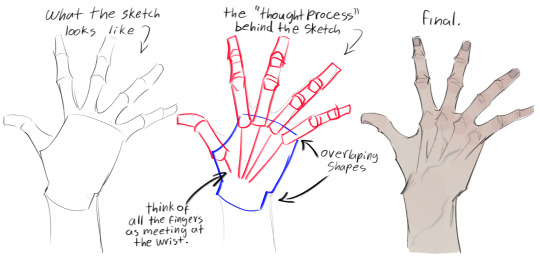

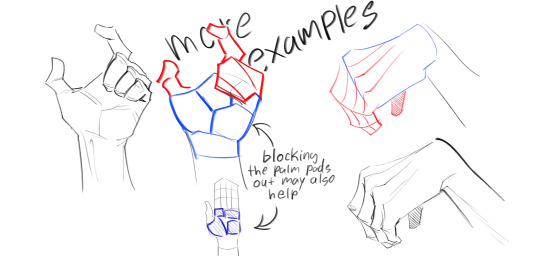
Disclaimer: I draw hands kinda messed up. I enjoy them that way. Your art teacher may not, LOL.
1K notes
·
View notes
Text










which bat photographed by Jose G. Martinez-Fonseca are YOU today?
4K notes
·
View notes
Text
Donald Trump signed an Executive Order to defund libraries!
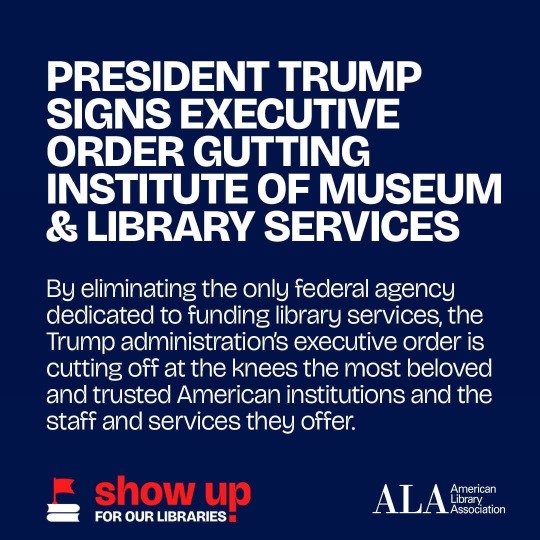


SHOW UP FOR OUR LIBRARIES! CONTACT YOUR CONGRESS REPS! 📚
14K notes
·
View notes
Note
Hi! I have recently got into pixel art as I have been learning to develop games and I've been following you for a bit and I have some questions!
How do you create coherent color palettes? I always find myself tweaking it and I'm sure it takes practice but your colors always look perfect, what magical powers do you behold??
Do you do any sketches to get shapes right or do you do it as you go? Again, I'm sure practice is the answer, there's no magical solution, but everything I do looks kinda stiff and dead
Anyway, thank you! Your art is wonderful!
honestly i started by using premade/mono chromatic palettes mostly and focused on values and composition. once i felt more confident in those, i started using color palettes taken from photos, films, or photobash multiple photos into one then color grade it so its more seamless. now its easy and natural to just pick colors. i think it’s important to understand the basics before trying to get too complicated, values/hues/color depth/composition/tones/hue shifting are all very helpful to learn about when being self taught. another tip is when the art is done ill usually add a color filter over the whole artwork so the colors vibe together better.
and yep i always sketch :) usually ill sketch with pencil, take a photo then draw over that. i love the feeling and organic feeling drawing w pencil gives my art. i def recommend bc it’ll help with the stiffness! i also use a drawing tablet and that helps my art flow more organically too. but thank you!! enjoy the journey of learning pixel art 💕




423 notes
·
View notes
Text







Would love to make these into keychains some day. Have more im drawing and ill post them later :)
7K notes
·
View notes

